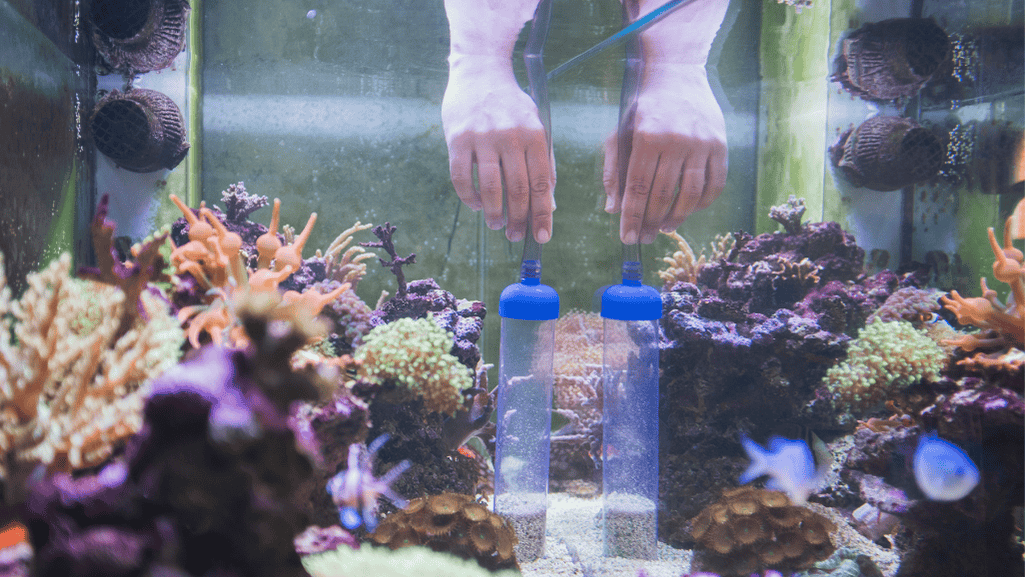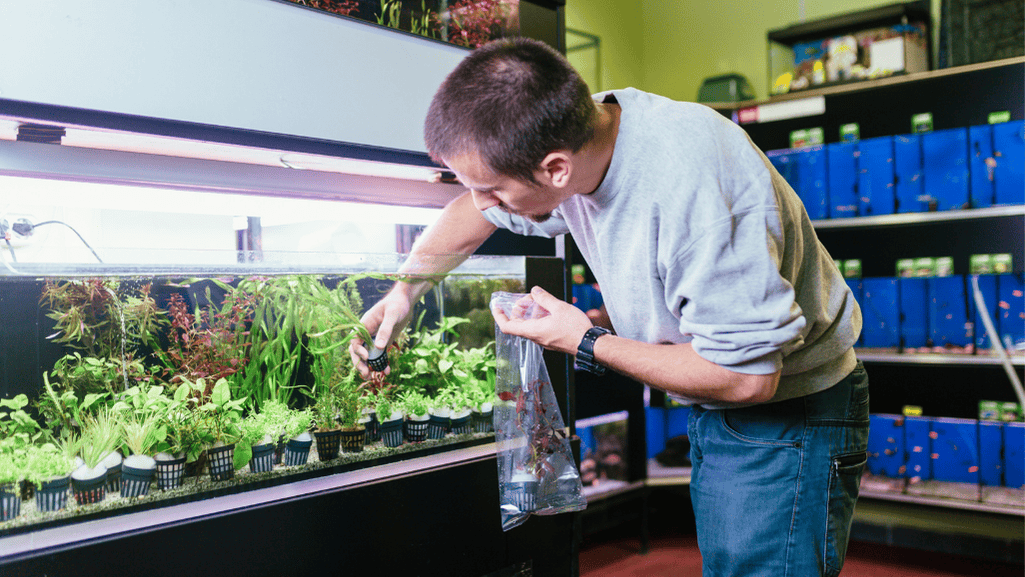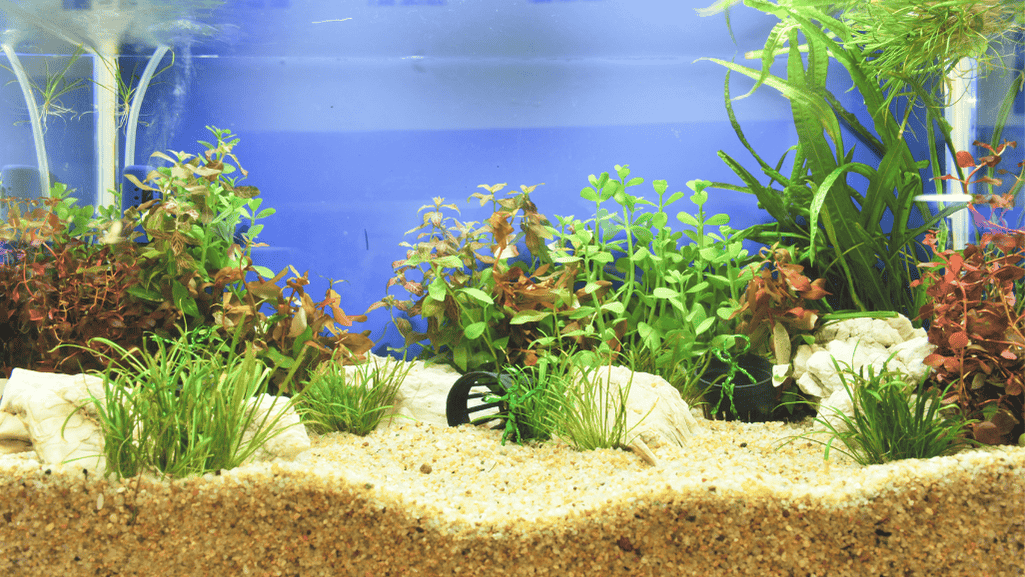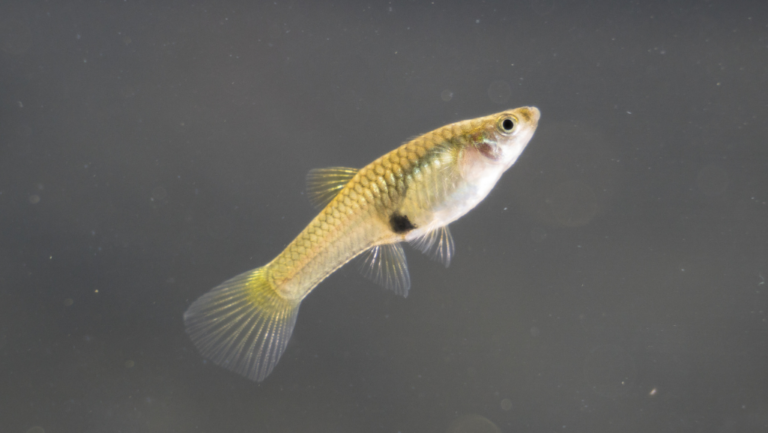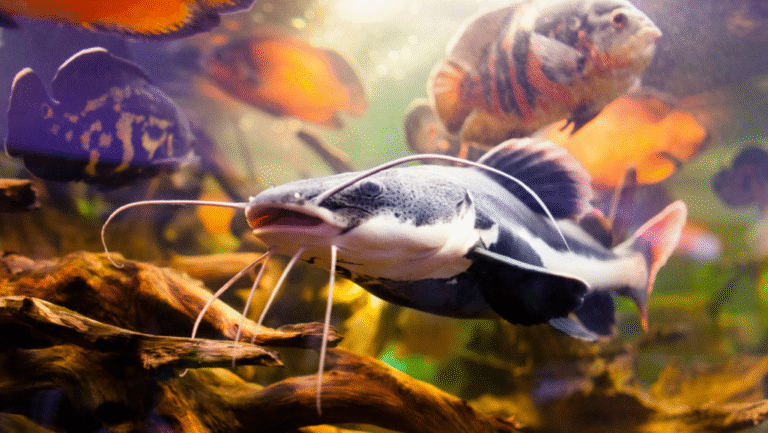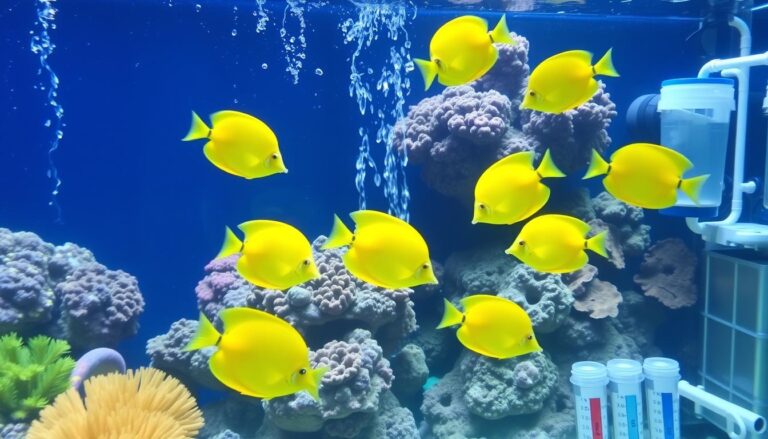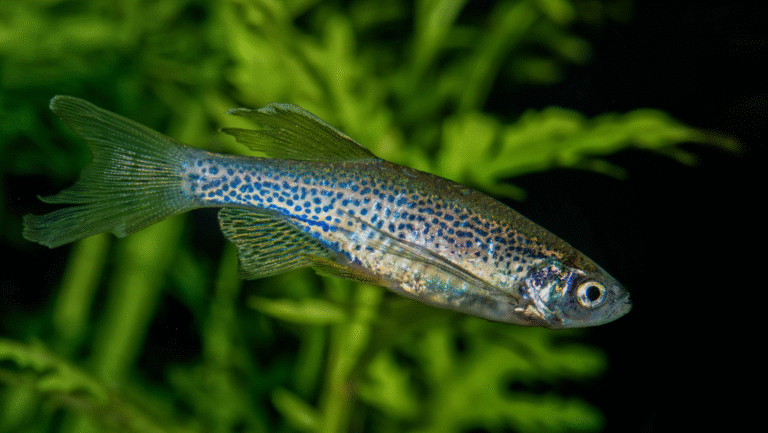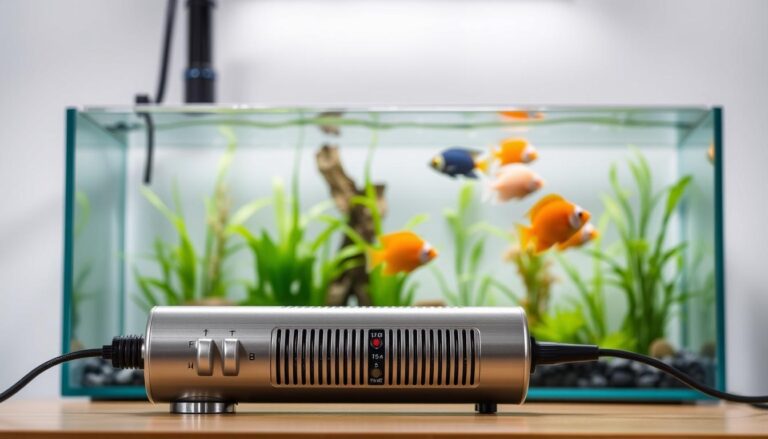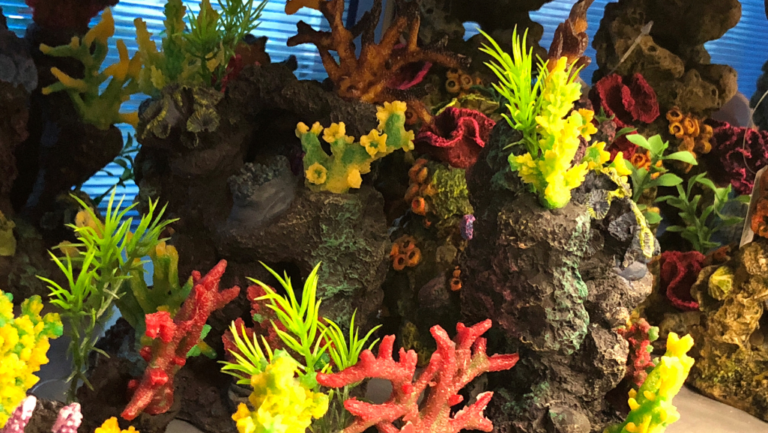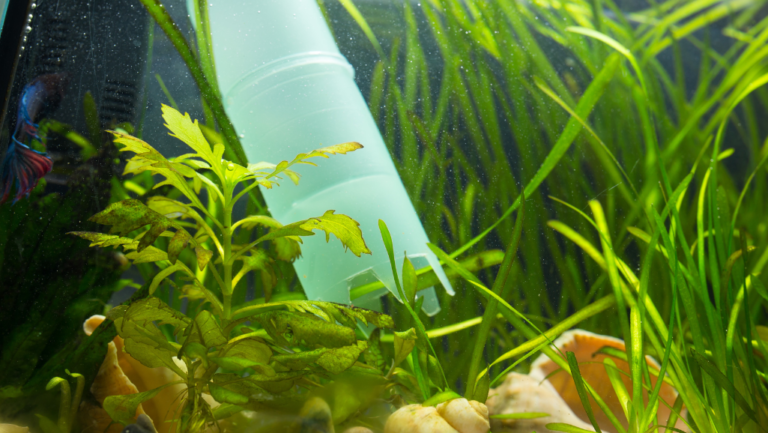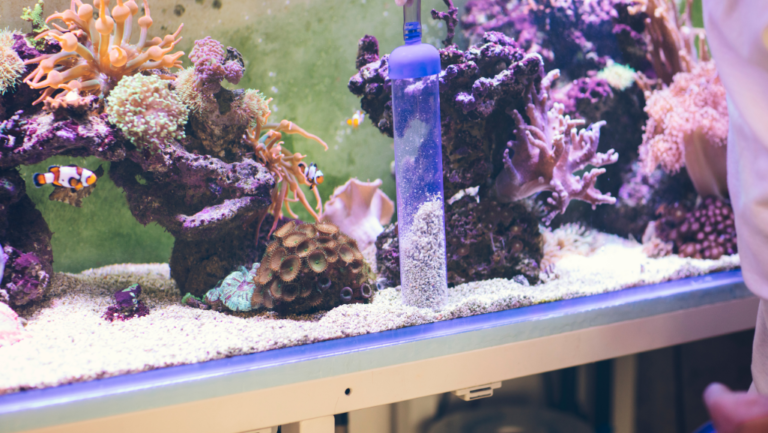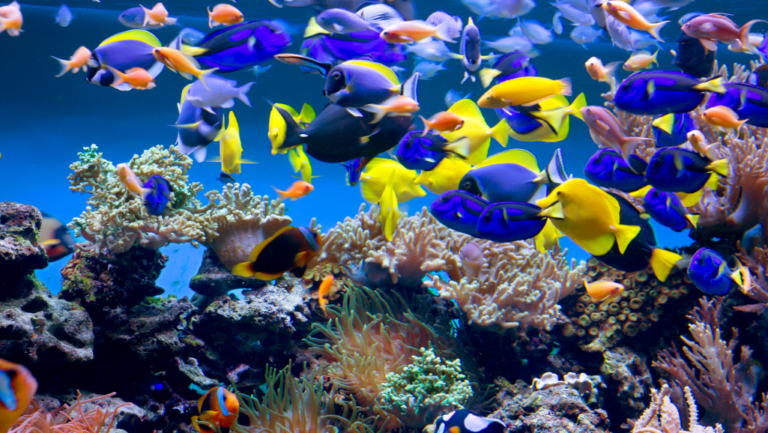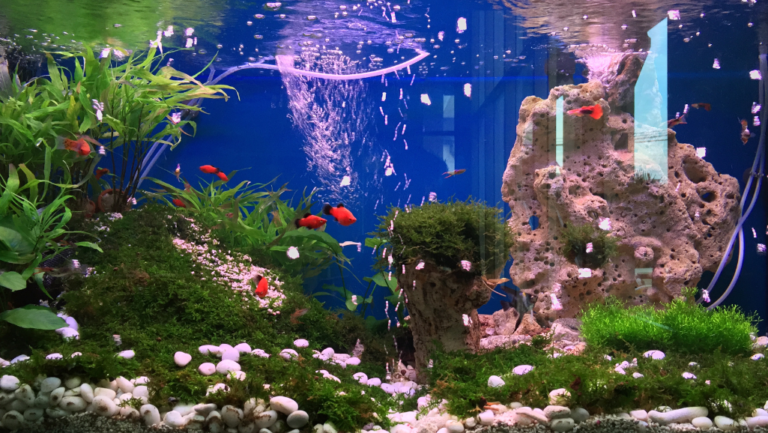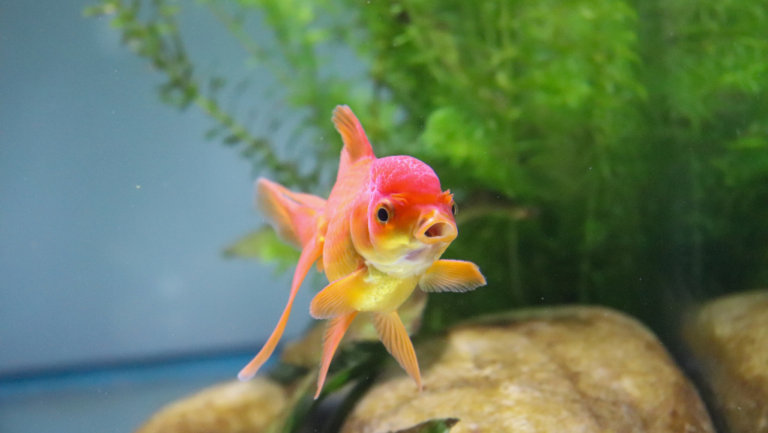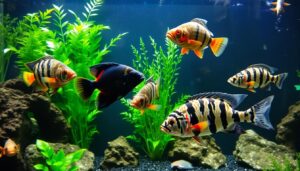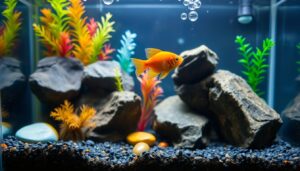Dive into the captivating world of aquariums! These miniature underwater realms bring life and color to any space. But creating a thriving aquarium ecosystem requires more than just filling a tank with water and fish. It’s an art that blends science, patience, and dedication.
Successful aquarium care and maintenance start with understanding the delicate balance of your tank’s ecosystem. Water quality is the foundation of a healthy aquarium. Regular testing and adjustments ensure your finned friends swim in a safe environment. Remember, your fish tanks are living, breathing systems that need consistent attention.
Setting up a new aquarium? Patience is key. It takes about three weeks for beneficial bacteria to establish themselves. These tiny helpers are crucial for maintaining water quality and breaking down waste. During this time, resist the urge to add too many fish too quickly.
Regular maintenance is the secret to a flourishing aquarium. Plan on spending an hour or two each week caring for your underwater world. This includes partial water changes, cleaning the substrate, and checking equipment. For tropical freshwater community tanks, changing about 25% of the water weekly keeps things pristine.
Key Takeaways
- Water quality is crucial for a healthy aquarium ecosystem
- Allow 3 weeks for beneficial bacteria to establish in new tanks
- Perform weekly maintenance for optimal fish tank health
- Change 25% of water weekly in tropical freshwater tanks
- Dedicate 1-2 hours per week for aquarium care
- Patience and consistency are vital for successful aquarium maintenance
Understanding the Aquarium Ecosystem
Creating a thriving aquarium ecosystem takes time, patience, and careful attention. The key to success lies in understanding the delicate balance of water parameters and the cycling process. Let’s dive into the essentials of maintaining aquarium water quality.
The importance of water quality
Water quality is the foundation of a healthy aquarium. Regular testing of temperature, pH, ammonia, nitrite, and nitrate levels is crucial. These water parameters directly impact the well-being of your aquatic life. A stable environment promotes fish health and plant growth.
Cycling your aquarium
The cycling process is vital for establishing beneficial bacteria in your tank. This process typically takes 4 to 6 weeks. During this time, bacteria multiply and convert harmful ammonia into less toxic nitrites and nitrates. Patience is key – avoid adding fish until the cycle is complete.
Balancing the nitrogen cycle
The nitrogen cycle is the heart of your aquarium’s ecosystem. It’s a natural process where waste products are broken down. Beneficial bacteria play a crucial role in this cycle, residing mainly in the substrate and biofilters. Maintaining the right balance ensures a safe environment for your fish.
- Monitor ammonia, nitrite, and nitrate levels regularly
- Perform water changes to keep nitrate levels in check
- Use live plants to help absorb excess nutrients
Remember, a well-balanced aquarium ecosystem doesn’t happen overnight. It requires ongoing care and attention to water parameters, the cycling process, and the nitrogen cycle. With proper management, you’ll create a beautiful, thriving underwater world.
Essential Equipment for Successful Aquarium Care
Setting up a thriving aquarium needs the right equipment. This includes filtration systems, aquarium lighting, and heaters. Each plays a key role in keeping your aquatic friends healthy.
Choosing the Right Filtration System
A good filtration system is the heart of your aquarium. It should have three stages: mechanical, chemical, and biological filtration. Look for a filter that can handle your tank’s size and flow rate.
Choose a system that can turn over the water volume at least three to five times an hour.
| Tank Size (Gallons) | Minimum Flow Rate (GPH) |
|---|---|
| 10 | 40 |
| 20 | 80 |
| 40 | 160 |
Selecting Appropriate Lighting
Aquarium lighting is key for fish health and plant growth. For fish-only tanks, use 1 to 2 watts per gallon. Plant lovers should use 2 to 5 watts per gallon.
LED lights are a great choice. They’re energy-efficient and don’t get hot, saving you money.
Importance of Heaters and Thermometers
Aquarium heaters keep the water at a stable temperature. This is crucial for fish health. Choose a heater that gives 3 to 5 watts per gallon.
For tanks over 40 gallons, use two smaller heaters. This helps distribute the heat better. Always use a digital thermometer to check the temperature daily.
“Maintaining the right temperature is crucial. Most tropical fish thrive in water between 74 to 77 degrees Fahrenheit.”
Quality equipment is the base of a healthy aquarium. Invest in reliable filtration, the right lighting, and accurate temperature control. This will help create a thriving underwater world for your fish.
Water Parameters and Testing
Keeping your aquarium water in top shape is key for your fish and plants’ health. Regular water tests ensure a great home for them. Let’s explore the important water parameters and how to check them.
In freshwater tanks, pH should be between 6.5 and 8.0, perfect for most fish. Ammonia and nitrite levels must be 0 ppm to avoid harm. Nitrate levels should be under 50 ppm, and general hardness (GH) should be 4-8 dGH.
To keep these conditions right, get a good test kit. API Master Test Kits or 5-in-1 Test Strips are great for quick and accurate checks. They help you measure pH, ammonia, nitrite, and nitrate levels easily.
| Parameter | Ideal Range | Testing Frequency |
|---|---|---|
| pH | 6.5 – 8.0 | Weekly |
| Ammonia | 0 ppm | Twice weekly |
| Nitrite | 0 ppm | Twice weekly |
| Nitrate | <50 ppm | Weekly |
Test your water more often when starting a new tank or during upkeep. Watch for any sudden changes in your fish or plants. By keeping a close eye on water quality, you’ll ensure a safe and healthy space for your aquatic friends.
Regular Cleaning and Maintenance Routines
Keeping your aquarium clean is key for your fish’s health. A clean tank stops toxic build-ups and keeps the ecosystem balanced. Let’s explore the cleaning tasks you need for your aquarium.
Performing Water Changes
Water changes are the heart of fish tank cleaning. Change 10-20% of the water each week to keep things stable. For bigger tanks, you might change less often, but stay consistent. Always use a water conditioner on new water before adding it.
Gravel Vacuuming Techniques
Cleaning the substrate is crucial for removing waste and uneaten food. Use a gravel vacuum during water changes to clean the tank’s bottom. This tool pulls up debris and old water. Clean one section at a time to not scare your fish.
Algae Control Methods
Algae can be a big problem in aquariums. To fight it, reduce light and don’t overfeed. Use an algae scraper or magnetic cleaner to remove algae from walls weekly. For tough algae, add algae-eating fish or snails.
| Task | Frequency | Importance |
|---|---|---|
| Water Changes | Weekly | High |
| Gravel Vacuuming | Bi-weekly | Medium |
| Algae Removal | Weekly | Medium |
| Filter Maintenance | Monthly | High |
A clean tank means happy fish. Stick to these routines to make a great home for your aquatic friends.
Aquarium Care and Maintenance: Tips for Success
Keeping an aquarium healthy needs commitment and knowledge. It’s important to clean the tank and manage water quality regularly. Bob Israel, an experienced freshwater aquarium hobbyist, suggests changing up to 50% of the water weekly.
The best temperature for most freshwater fish is between 72-78°F. A good power filter, cleaned often, is key for a healthy tank. Start with a 20-gallon tank. This size helps keep water stable and reduces cleaning needs.
When adding new fish, do it slowly. Introduce five fish at a time to avoid stressing the tank. Aqua Joy Life advises quarantining new fish for 30 days before adding them to your main tank. This step helps prevent disease.
“Maintaining a freshwater aquarium is simpler than a saltwater one, but it still requires attention to detail and regular care.”
Here are some essential aquarium care tips:
- Test water parameters weekly (ammonia, nitrites, nitrates, pH)
- Perform 15-25% water changes every 1-2 weeks
- Keep pH levels between 6.8 and 7.8
- Maintain ammonia and nitrite levels at 0 ppm
- Keep nitrate levels under 40 ppm
By following these tips and staying updated, you’ll create a vibrant home for your fish.
Proper Fish Nutrition and Feeding Guidelines
Fish nutrition is key to keeping your aquarium fish healthy. A good fish feeding guide helps your fish thrive. Quality fish food should have the right nutrients like proteins, lipids, and carbs.
Protein is vital for fish growth. Experts say fish food should have about 45% protein. Lipids should be 10-25%, and carbs should be 15-20%.
Choose fish food based on your fish’s needs. Marine fish need omega-3 fatty acids, 0.5 to 2% of the food’s dry weight. They also need essential amino acids like arginine, lysine, and methionine.
| Nutrient | Recommended Content |
|---|---|
| Protein | 45% |
| Lipids | 10-25% |
| Carbohydrates | 15-20% |
| Ash | |
| Phosphorus |
Avoid overfeeding to keep water quality good. Most fish do well with small meals 2-3 times a day. Remove any uneaten food to stop contamination. By following these tips, you’ll keep your fish healthy and your aquarium thriving.
Plant Care in Freshwater Aquariums
Creating a thriving underwater garden needs knowledge and dedication. Aquatic plants add life and beauty to your tank. They also improve water quality. Let’s look at the basics of live plant care and aquascaping.
Selecting Appropriate Aquatic Plants
Choose plants that fit your tank’s conditions. Popular choices include Amazon Sword, Anubias, and Java Fern. These plants do well in pH levels of 6.5 to 7.8 and temperatures of 74°F to 80°F. Make sure your lighting is around 6500K to help them grow well.
Fertilization and Trimming Techniques
Proper fertilization is crucial for lush growth. Use root tabs for plants that feed from the substrate. For leaf-absorbing plants, liquid fertilizers work best. Keep nitrates below 10 ppm and phosphates under 0.5 ppm to avoid algae.
Trimming with plant scissors keeps your aquascape looking neat. Remove dead leaves and prune overgrown stems. This encourages healthy growth and keeps your underwater garden looking its best.
Balancing Plant Growth with Fish Population
A balanced aquarium benefits both plants and fish. Live plants produce oxygen, reduce fish stress, and control algae. Mix fast and slow-growing species to absorb excess nutrients and provide natural shelters for your fish.
| Plant Type | Growth Rate | Light Requirement | CO2 Need |
|---|---|---|---|
| Amazon Sword | Moderate | Medium to High | Low to Medium |
| Anubias | Slow | Low to Medium | Low |
| Java Fern | Slow | Low to Medium | Low |
| Vallisneria | Fast | Medium to High | Medium |
Successful aquascaping needs regular maintenance. Do weekly 10% water changes and clean your filter monthly. This keeps your underwater garden thriving.
Preventing and Treating Fish Diseases
Keeping your aquarium fish healthy is key for a thriving underwater world. Start by keeping water quality high and avoiding overcrowding. Also, quarantine new fish to protect your existing ones.
Regularly observe your fish. Look for changes in behavior, appetite, or appearance. Common diseases include white spot (ich) and fin rot. Catching these early and treating them quickly is crucial for recovery.
| Disease | Symptoms | Treatment |
|---|---|---|
| White Spot (Ich) | White spots on body and fins | White spot treatment, raise temperature |
| Fin Rot | Frayed or disintegrating fins | Antibacterial medication |
| Dropsy | Swollen body, protruding scales | Antibiotics, improved water quality |
| Mouth Fungus | White cotton-like growth around mouth | Antifungal medication |
For serious cases, seek advice from aquarium experts or vets. Prevention is easier than treatment. A clean, stress-free environment greatly reduces disease risk, leading to a vibrant, healthy aquarium.
Creating a Suitable Environment for Fish
A successful fish tank setup is more than just water. It’s about making a home for your fish to thrive. Let’s explore the key steps to create the perfect environment.
Choosing Compatible Fish Species
Choosing the right fish is vital for a peaceful tank. Learn about each species’ needs and habits before adding them. For beginners, guppies, platies, and bettas are good choices. Saltwater fans might prefer damselfish and clownfish for easy care.
Providing Adequate Space and Hiding Spots
Fish need space to swim and explore. A 20-gallon tank is a good start. Add decorations like rocks, plants, and driftwood for hiding spots. These not only look good but also help reduce stress by mimicking their natural habitats.
Managing Stress Levels in Aquarium Inhabitants
Keeping your fish stress-free is crucial for their health. Keep the water’s pH between 6.8 and 7.8 for most fish. Change 15-25% of the water every 1-2 weeks to keep it clean. Use good filters and live plants like Anubias or Java fern to improve water quality naturally.
| Parameter | Recommended Level |
|---|---|
| pH | 6.8 – 7.8 |
| Temperature | 75°F – 80°F |
| Ammonia | 0 ppm |
| Nitrites | |
| Nitrates |
Creating a great home for your fish is a continuous effort. Regular care and attention will help your fish thrive in their new environment.
Conclusion
Creating a successful aquarium takes dedication and knowledge. Understanding the ecosystem and keeping water quality right is key. Regular care keeps your aquatic pets healthy and happy.
Aquarium care is a continuous task. Experts say to change 1 to 10 percent of water monthly to control nitrate levels. Using charcoal in both freshwater and seawater systems helps slow down nitrogenous waste buildup.
Investing in quality equipment is important for a successful aquarium. Aeration with air stones is crucial to prevent asphyxia in case of water supply issues. Automatic feeders are great for when you’re away, ensuring your fish are fed on time. With patience and proper care, your aquarium will become a beautiful hobby that brings underwater life into your home.
